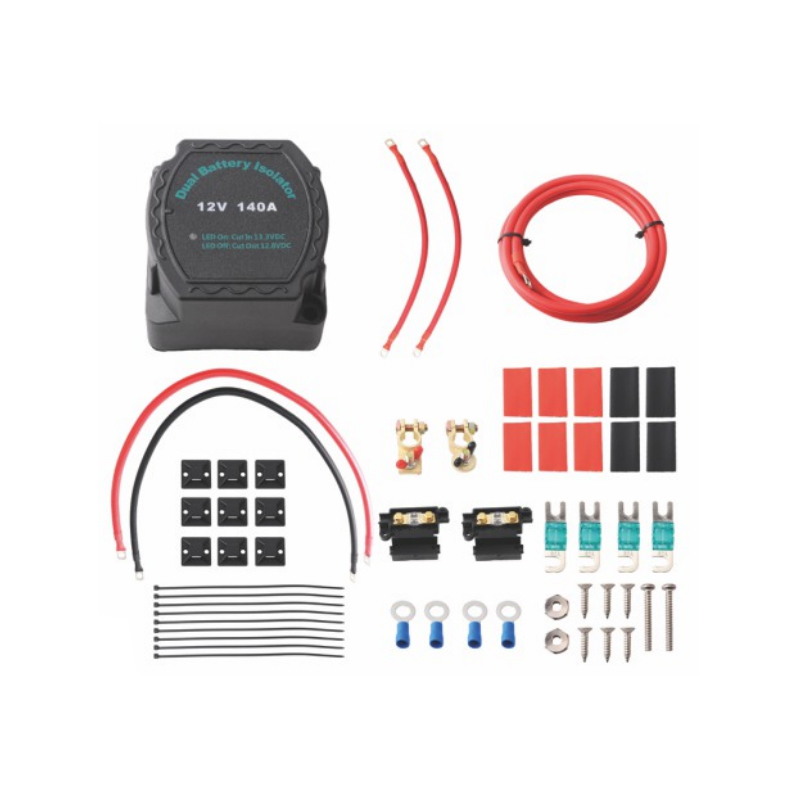- Tel: +86-13385878168
- E-mail: [email protected]
- Please contact us if you have questions.

Web Menu
Product Search

Dual Battery Isolator Effectively Prevents Battery Interference in Vehicles
In simpler systems without isolation, such as vehicles with direct connections between batteries, the power drain from accessories connected to the auxiliary battery can affect the main battery. In such scenarios, the primary battery could end up too weak to start the engine, creating a serious inconvenience or even a breakdown. The Dual Battery Isolator effectively prevents this interference by controlling the connection and power flow between the two batteries.

The Role of a Dual Battery Isolator in Preventing Interference
A Dual Battery Isolator works by ensuring that the auxiliary battery and the starting battery are only connected when necessary. Typically, the isolator connects the batteries when the engine is running and separates them when the engine is off. This allows the alternator to charge both batteries while preventing power from the auxiliary battery from draining the starting battery. Isolating the batteries during periods of inactivity ensures that both batteries retain their charge.
This isolation is essential because, without it, the auxiliary battery could draw power from the starting battery, particularly when the engine is off. A Dual Battery Isolator avoids this by keeping the circuits separate, allowing the starting battery to be reserved strictly for engine startup and critical vehicle functions, while the auxiliary battery powers non-essential accessories. This separation ensures no interference between the two batteries.
How the Dual Battery Isolator Works in Detail
It uses a combination of voltage-sensing technology and relay systems to manage when and how the batteries are connected. When the engine is running, the alternator generates power, and the isolator senses the voltage levels of both batteries. Once the starting battery is sufficiently charged, the isolator allows the charging current to flow to the auxiliary battery, ensuring it charges without affecting the main battery.
When the engine is turned off, the isolator disconnects the auxiliary battery from the main battery, preventing any power loss from the starting battery. This is particularly important in vehicles that rely on accessories powered by the auxiliary battery, such as lighting, refrigerators, or other camping equipment in RVs and off-road vehicles. The Dual Battery Isolator ensures that these accessories do not compromise the ability to start the engine.
Additional Features to Enhance Battery Protection
In addition to preventing interference, many modern Dual Battery Isolators include smart charging technology that optimizes the battery charging process. This ensures that both batteries receive the appropriate amount of charge without overcharging, which can cause battery degradation. Some isolators feature advanced features like automatic switching and over-voltage protection, ensuring that both batteries remain safe and charged under various conditions.
Furthermore, by preventing deep discharge and undercharging, the Dual Battery Isolator enhances the lifespan of both batteries. This is particularly useful in vehicles used for extended periods, where accessories may be in use for hours without the engine running.
The Importance of the Dual Battery Isolator for Battery Longevity
In conclusion, it is an essential component for vehicles with multiple batteries, as it effectively prevents interference between the starting and auxiliary batteries. By maintaining separation between the two batteries when the engine is off, the isolator ensures that the starting battery remains fully charged and ready for use, while the auxiliary battery can power accessories without affecting the main battery's performance.
Related Products
Request for a call today
-
-
Romy
-
Phone: +86-13385878168
-
WhatsApp: +8613385878168
-
Email: [email protected]
-
-
-
Clark
-
Phone: +86-15397359100
-
Email: [email protected]
-
-
-
Pinky
-
Phone: +86-15305875100
-
Email: [email protected]
-
- Mobile Terminal


 English
English Español
Español













